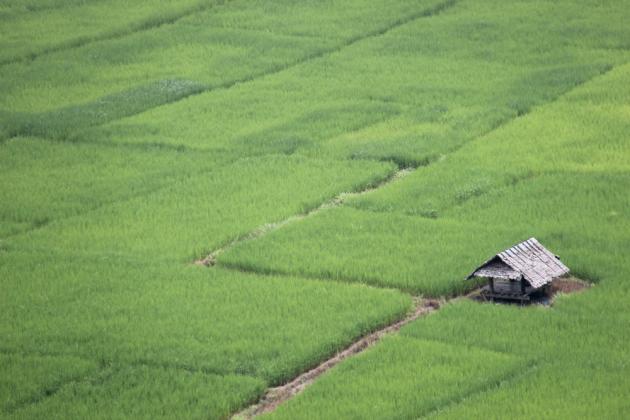Fly fishing on the Yuam

Sleepy Mae Sariang in Northwest Thailand offers the beauty of Pai but without the tourists
Sitting on a triangle of land where the Yuam and Mae Sariang rivers meet in remote Mae Hong Son province, the sleepy town of Mae Sariang has long been overshadowed by its sister city, the popular Pai. But popularity doesn’t always make for a good destination. While Pai district has been worn down by the tourism boom and is now full of Chinese tourists and selfie sticks, Mae Sariang is enticing visitors to enjoy its quiet and rustic beauty.
“Mae Sariang was once known as Muang Yuam [Yuam township], and it was noted for the finest teak,” says Phathakorn Wongaree of Mae Sariang Museum, as he shows me around.
“When Siam was trading teak with British companies in the 19th century, Mae Sariang was a major outpost for the log-loading operation.”
The loggers floated the teak trunks along the Yuam River to the sawmill at Mawlamyine in Myanmar.
The industry shifted to the North once the new railway system connecting Bangkok and Chiang Mai was completed. Mae Sariang simply wasn’t part of the plans for Siam’s modernisation.
Yet its legacy can still be felt, both in and outside the museum. Strolling along Laeng Phanich Road, a small strip bordered by the Yuam River, you cannot help but notice the teak houses standing side by side. These are the former homes of the West Bengal labourers brought by the British log companies to Mae Sariang to work in the logging business. When the log industry moved to Lampang and Chiang Mai provinces in the 1920s, many Bengalis – Pakistanis as they are known today – decided not to follow but instead built their mosque and made Mae Sariang their home.
“Mae Sariang has many ethnic differences,” says Halima, as she brings me a plate of yellow rice with chicken and roasted spices – a typical Muslim dish. “If you stay here for a week, you will notice the big differences in this small town. Shan, Chinese, Kareni, Pakistani and Thais all live together in Mae Sariang. We might follow different faiths but we all respect each other.”
With Halima’s directions ringing in my head, I have no
problem finding the mosque. Musjid Jameatulislam stands on Laeng Phanich Road, and it is a beautiful piece of architecture with ivory-white twin minarets. A stone throw’s from the mosque is the market – where people from all walks of life and faiths come to buy their food. From here, I make my way along Wiang Nai Road and soon reach the small church of St Paul.
There are plenty of Buddhist temples in Mae Sariang too. Legend has it that four hermits established four temples in the town and that anyone visiting all four would be blessed with good health and wealth.
Chom Chaeng, Chom Mon, Chom Thong and Chom Kitti sit on top of the hill overlooking Mae Sariang. You need good health to reach the top of the hill, as each temple requires a climb up more than 100 steps. I’m less certain about the wealth but visitors are certainly enriched by the beautiful view of the surrounding countryside and rice paddy fields.
Besides the mosque and temples, Mae Sariang is also a playground for anyone who loves the great outdoors.
Kayaking allows you to travel just like a log from Yuam to the Salween River. For two hours or longer if you prefer, the river leads you through the peaceful countryside with the Tenasserim Hills as a distant backdrop.
Here, in this sleepy district of Mae Sariang, fans of the movie “A River Runs Through It” can enjoy fly fishing in the crystal-clear waters of the Yuam River.
“You can fish just like Brad Pitt and Robert Redford did in Montana,” says local fishing guide Bobby Kaotakol.
“The Yuam is home to surprisingly large mahseer and they respond like large brown trout, happily taking dry flies.”
Sadly, I have no time to try my hand at fly fishing but resolve to do so when I return to this sleepy riverside district.
IF YOU GO
<< Chiang Mai is the gateway for Mae Sariang. Public buses leave daily from Chiang Mai Arcade bus station, and the journey takes about five hours. A faster minivan service is also offered.
RELATED
